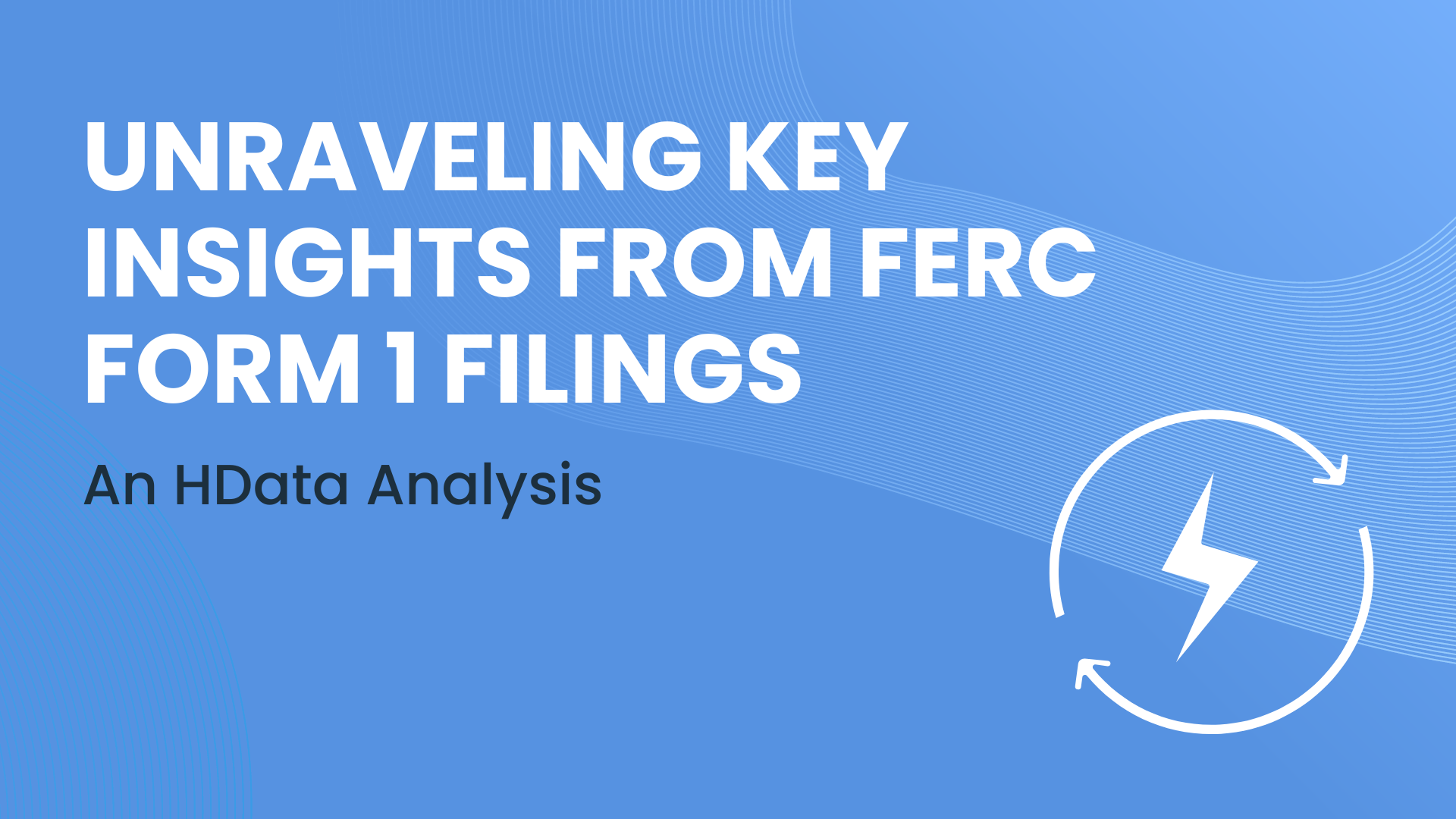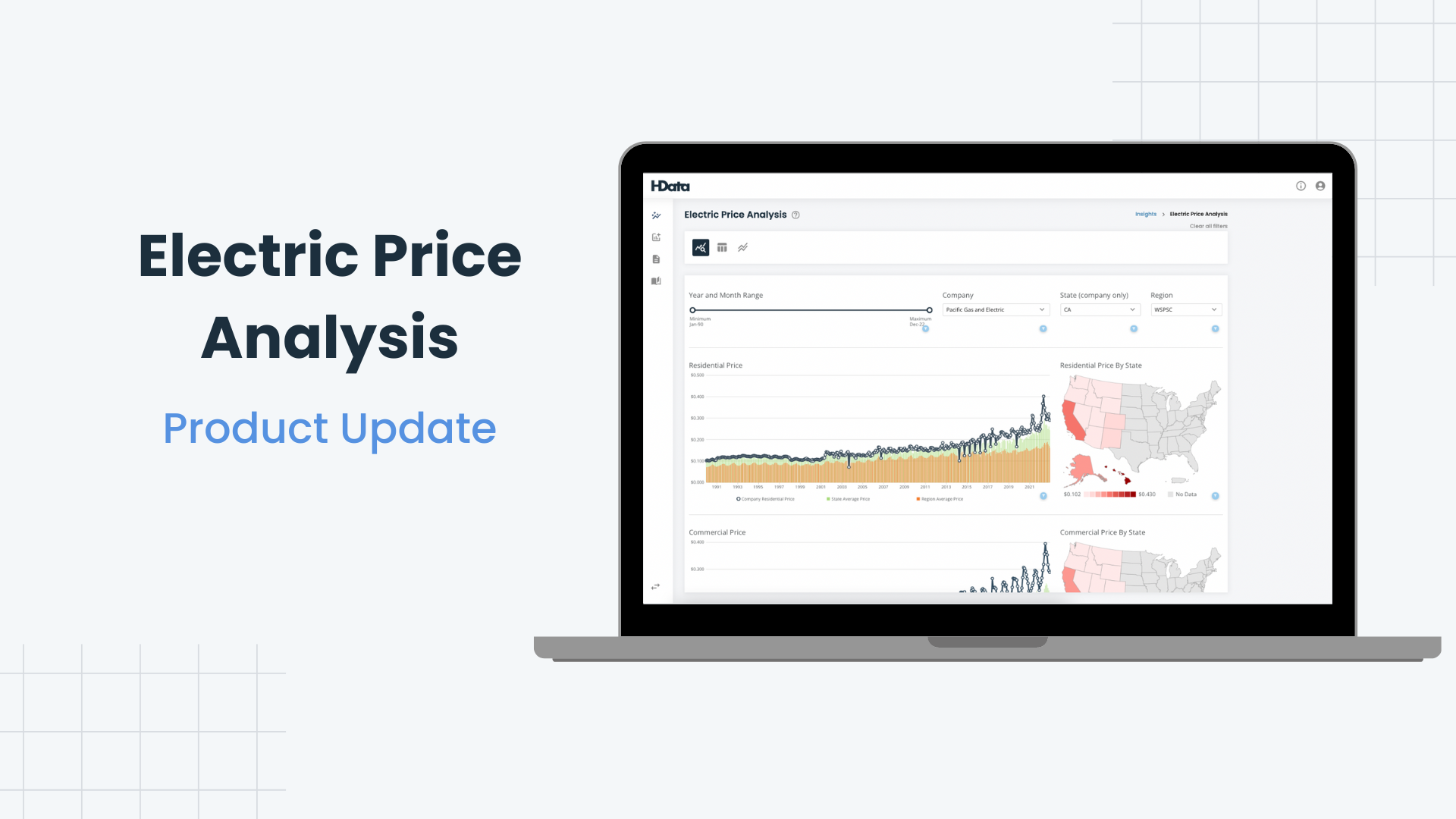Introduction
Rate Base is a key metric for electric and gas utilities in the United States. It serves as a nuanced and controversial metric because not only does the profitability of a utility ride on it, but it is open for interpretation by regulators. The data used to calculate the rate base comes from the Federal Energy Regulatory Commission (FERC)’s Form 1, a document the regulatory agency requires utilities to file annually. It contains comprehensive financial and operational data for utilities. This data holds the building blocks you need to determine a rate base, but what exactly is rate base and how do you calculate it?
Rate Base Definition
The basic definition of Rate Base is the value of property/assets of a utility minus accumulated depreciation of those assets. The assets a utility may include in the rate base depends on the applicable utility regulator’s definition of rate base. This generally means any assets that are used to directly provide utility services to customers, such as the generation plants and transmission/distribution infrastructure, supplies to maintain services, and the cash on hand. Accumulated depreciation is subtracted from Rate Base because it represents the value of wear and tear on these assets, detracting their total value and “usefulness” before needing to be replaced.
Why is Rate Base important?
It ultimately determines how much a utility’s customers may be charged for services as negotiated in rate cases. Rate cases are proceedings where a regulator and utility negotiate the rate the utility can charge their customers. This is calculated from a revenue requirement which is itself a function of rate base:
Revenue Requirement = (Rate Base x Rate of Return on Equity) + Other Expenses
You can see that rate base is included as a variable in revenue requirements. Rate of Return on Equity (RoE) is the allowed rate in which a utility can earn money from their rate base, meaning a lower rate equates to less profit for the utility. This rate varies widely across the country depending on the regulator but can be approximated by taking net income divided by proprietary capital. I will dive into this in a future article of how to use rate base in preparation for a rate case.
Rate Base Example
How does rate base look in real life? Let’s take a look at an example from Pacific Gas & Electric:
PG&E is located in California where wildfires are an ever-present threat. PG&E took a huge hit in 2018 and 2019 when much of its transmission infrastructure was damaged or destroyed by wildfires. You can see this visualized by the total Operation and Maintenance cost overlaid with the Rate Base components. Because PG&E had to rebuild, the total value of its infrastructure rose because depreciation would be lower (new transmission lines last longer) and deferred debits would rise to help cover the cost of repair and new construction. If PG&E’s Return on Equity stayed the same, they would still be earning more profit because their rate base increased.
Types of Rate Base
We’ve been discussing rate base assuming that this covers all aspects of an electric utility in generation, transmission, and distribution. Rate base can also be divided into these separate utility services. In some cases, a utility may only operate in one of these.
AEP Generating Co. only produces electricity, so rate base will focus on its generating infrastructure, while a purely transmission company like New England Electric Transmission Corp will focus on calculating the value of their poles and conduit lines. Our FERC dataset is useful for calculating these sub-genres of rate base.
Generation Rate Base
Utility Plant is the largest single component of rate base. This represents the overall plant value of the utility, but we can slice this up into sub-components to identify Production Plant. FERC goes even further by requiring utilities to identify values for Steam, Nuclear, and Hydro production that can be summed into Production Plant. This means there will be slight nuances where Steam production value takes into account boilers and engine-driven generators, Hydro will include the value of water wheels, and Nuclear its reactor.
Transmission Rate Base
Once electricity is generated, it relies on transmission infrastructure to get it to the right place. FERC tracks transmission value to the point we can create a transmission-specific rate base taking the value of Transmission Plant. This accounts for the value of the towers, fixtures, conduits, and the roads/trails to the transmission towers.
Distribution Rate Base
Distribution infrastructure takes over from transmission to deliver electricity to customers. This means there will be similar assets to transmission such as lines and poles, but uniquely distribution infrastructure is included such as transformers, meters, distribution poles, and street lighting systems.
How to Calculate Rate Base
We’ve already discussed some aspects of how Rate Base is calculated; total assets minus accumulated depreciation for those assets. We’ve also discussed what assets might be included and how they differ between generation, transmission, and distribution. This isn’t everything, though.
The visualization above shows what goes into Rate Base as defined by the Washington Utilities and Transportation Commission (WUTC) and visualized with three utilities in the state. This data shows some of the more important components but is not encompassing all assets that may go into rate base. In fact, what WUTC wants included may differ from what other regulators require. This highlights an important distinction between accounting methods for rate base.
“Accumulated deferred income taxes” are usually only included if someone takes the “balance sheet” approach which focuses on assets only reported in the balance sheet. Alternatively, we can focus on the “fair value” rate base tied to the current price of assets, or “original cost” which focuses on the assessed value of an asset at the time and price it was purchased.
Even with standardized accounting there are items that are included or excluded based on regional precedents, needs, or the type of utilities under a regulator’s jurisdiction.
“Construction work in progress” (CWIP) may not be included except in rarer exceptions because future assets do not fall under the “used and useful” principle until those assets are operational and useful for customers. However, it may be prudent to include CWIP from both a regulator and utility perspective as utilities recoup a cash flow earlier to finance capital-intensive construction projects. Having CWIP included in rate base can ease any financial strain on the utility on longer-lead time capital projects which might hinder credit ratings.
These methods change between regions and regulators. If you are a regulated utility, it is important to check with your respective regulators about their accounting requirements for rate base. HData’s method is designed to be a more comprehensive approach based on the standard of the WUTC but it is not the only method. What our approach does is apply one method across every single FERC-regulated utility in the country. This gives a solid baseline for your analysis if you are investigating the rate base of competitors and peer groups. You can take this further by including your own FERC line items from Form 1 and 3Q into a customized rate base calculation.


